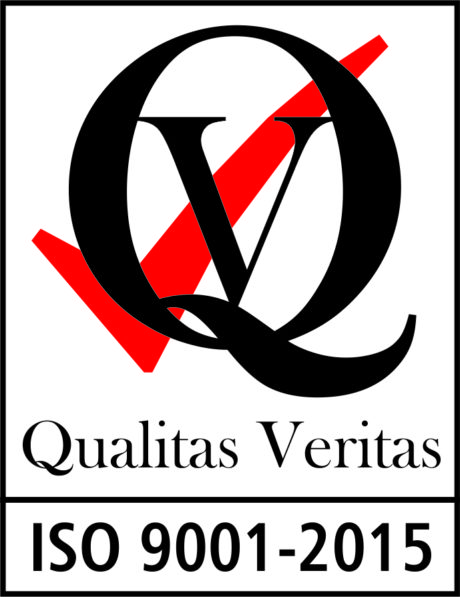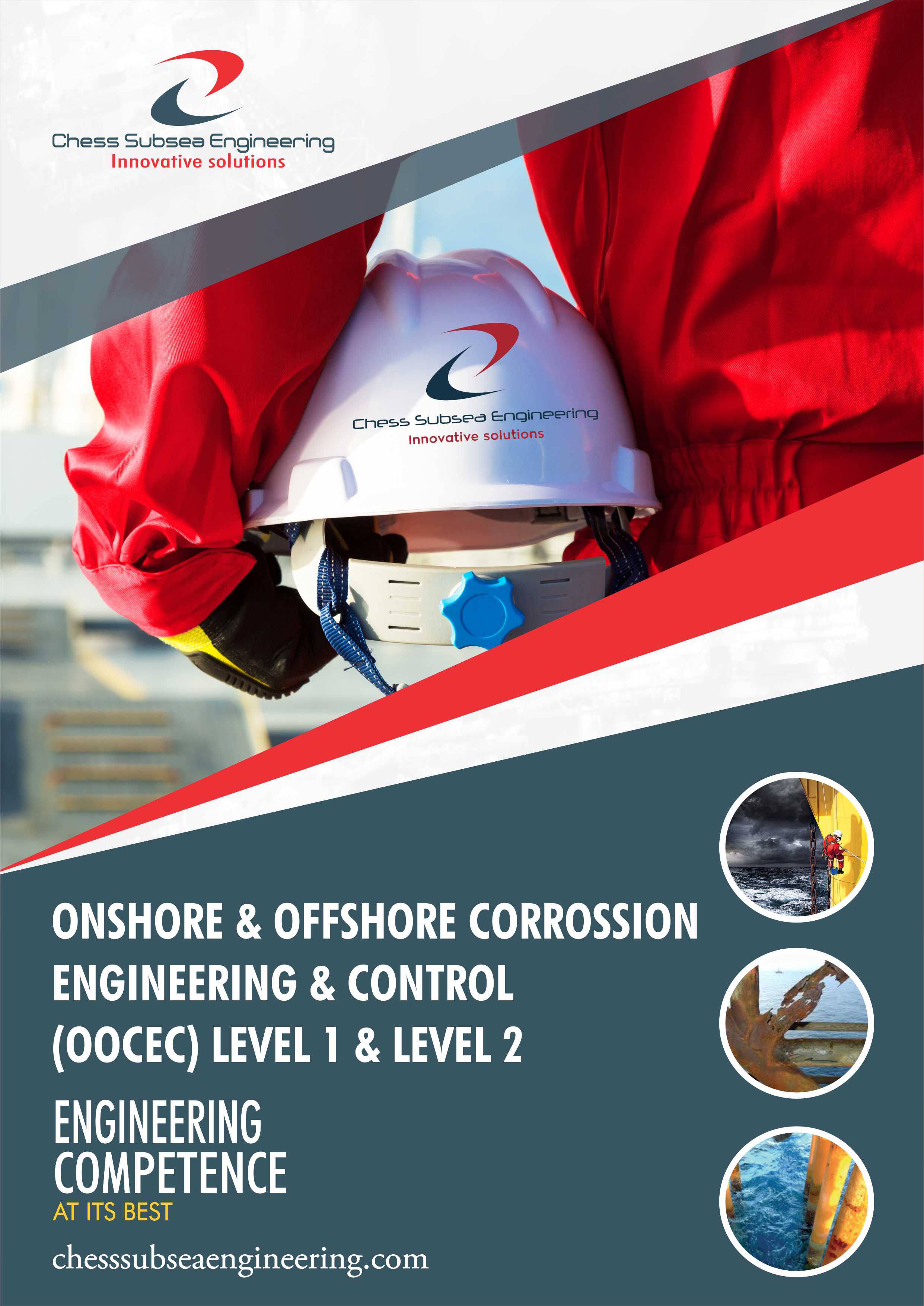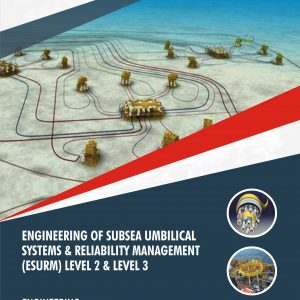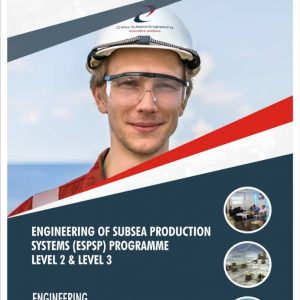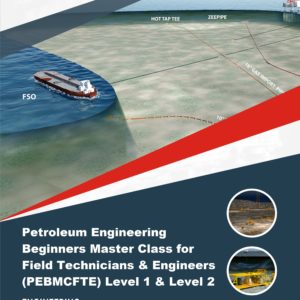Description
The OOCEC Level 1 course is designed to provide foundational knowledge and skills in corrosion engineering and control specific to onshore and offshore environments. It covers topics such as corrosion mechanisms, types of corrosion, and corrosion control methods applicable to both onshore and offshore structures.
The OOCEC Level 2 course is an advanced program that builds upon the knowledge gained in Level 1. It delves deeper into corrosion engineering principles and focuses on advanced corrosion control techniques, inspection methods, and risk assessment in onshore and offshore settings.
Both the Level 1 and Level 2 courses emphasize practical applications and hands-on learning. Participants will gain an understanding of how corrosion affects various materials commonly used in onshore and offshore structures, such as metals and alloys, and learn how to select appropriate corrosion control measures.
The courses also cover relevant industry standards and regulations related to corrosion control in onshore and offshore environments. Participants will be introduced to the best practices and codes of conduct followed in the industry to ensure safety, environmental protection, and the longevity of structures.
Upon completion of the OOCEC Level 1 and Level 2 courses, participants will have a comprehensive understanding of corrosion engineering principles and the skills necessary to assess, prevent, and control corrosion in onshore and offshore settings. This knowledge will enable them to contribute to the design, maintenance, and integrity management of structures in the oil and gas industry, offshore platforms, pipelines, and other similar infrastructure.
Onshore & Offshore Corrossion Engineering & Control (OOCEC) Level 1 & Level 2 covers Ship (Marine) & Machinery Corrosion, Electrochemical Cell Principle, Corrosion Rate, Parameter Influencing Corrosion Rate, Uniform Corrosion & Formation, Galvanic Corrosion & Formation, Pitting Corrosion & Formation, Crevice Corrosion & Formation, Microbiological Corrosion & Formation, Corrosion Fatigue & Formation, Stress Corrosion Cracking & Formation, Erosion Corrosion & Formation, Hydrogen Induced Cracking & Formation, Corrosion Control by Design Application Principle, Barrier Protection Application Principle, Cathodic Protection Application Principle, Use of Inhibitors Application Principle, Use of Paint & Coating Application Principle , HDG Coating Application & Inspection, Corrosion Testing Methods and more.
OOCEC Level 1 & Level 2 is structured to bridge the needed knowledge gap at beginner’s to intermediate level.
Course Outlines
Ship (Marine) & Machinery Corrosion
Electrochemical Cell Principle
Corrosion Rate
Parameter Influencing Corrosion Rate
Uniform Corrosion & Formation
Galvanic Corrosion & Formation
Pitting Corrosion & Formation
Crevice Corrosion & Formation
Microbiological Corrosion & Formation
Corrosion Fatigue & Formation
Stress Corrosion Cracking & Formation
Erosion Corrosion & Formation
Hydrogen Induced Craking & Formation
Corrosion Control by Design Application Principle
Barrier Protection Application Principle
Cathodic Protection Application Principle
Use of Inhibitors Application Principle
Use of Paint & Coating Application Principle
HDG Coating Application & Inspection
Crevice Corrosion as per ASTM G48
Pitting Corrosion as per G48
Intergranular Corrosion as per ASTM A262
Ocalic Acid Etch Test
Classification of Etch Structure
Ferric Sulfate Sulfuric Acid Test
Nitric Acid Test
Copper Copper Sulfate Sulfuric Acid Test
SCC as per ASTM G36
SCC Test as per NACE TM077
Hydrogen Induced Craking Test as per NACE MR0284
Salt Spray Test as per ASTM B117
Technical Support References
Ref 1: Introduction to Corrosion Engineering
Ref 2: Ship (Marine) & Machinery Corrosion
Ref 3: Electrochemical Cell Principle
Ref 4: Corrosion Rate
Ref 5: Parameter Influencing Corrosion Rate
Ref 6: Corrosion Types
Ref 7: Uniform Corrosion & Formation
Ref 8: Galvanic Corrosion & Formation
Ref 9: Pitting Corrosion & Formation
Ref 10: Crevice Corrosion & Formation
Ref 11: Microbiological Corrosion & Formation
Ref 12: Corrosion Fatigue & Formation
Ref 13: Stress Corrosion Cracking & Formation
Ref 14: Erosion Corrosion & Formation
Ref 15: Hydrogen Induced Craking & Formation
Ref 16: Corrosion Control by Design Application Principle
Ref 17: Barrier Protection Application Principle
Ref 18: Cathodic Protection Application Principle
Ref 19: Use of Inhibitors Application Principle
Ref 20: Use of Paint & Coating Application Principle
Ref 21: HDG Coating Application & Inspection
Ref 22: Crevice Corrosion as per ASTM G48
Ref 23: Pitting Corrosion as per G48
Ref 24: Intergranular Corrosion as per ASTM A262
Ref 25: Ocalic Acid Etch Test
Ref 26: Classification of Etch Structure
Ref 27: Ferric Sulfate Sulfuric Acid Test
Ref 28: Nitric Acid Test
Ref 29: Copper Copper Sulfate Sulfuric Acid Test
Ref 30: SCC as per ASTM G36
Ref 31: SCC Test as per NACE TM077
Ref 32: Hydrogen Induced Craking Test as per NACE MR0284
Ref 33: Salt Spray Test as per ASTM B117
Ref 34: Offshore Corrossion Engineering JSA
Assessment
Participant underpinning knowledge of Onshore & Offshore Corrosion Engineering & Control will be accessed with short answer multiple-choice questionnaire at the conclusion of the course.
Outcome
Participants will gain an in debt understanding of Onshore & Offshore Corrosion Engineering & Control. They will also be able to function with minimum supervision as Corrosion Engineer for IOCs, subsea pipeline company contractor, vendor or installation company.
Professional Certificate
Issued directly by Chess Subsea Engineering Europe.
Participant may be presented for Offshore Petroleum Training Organization (OPITO) Certification.
How to Register
Click here to download registeration booklet on msword and email completed booklet to info@chesssubseaengineering.org directly.
